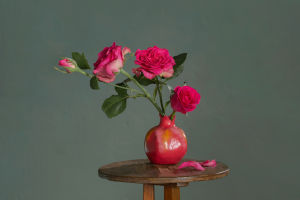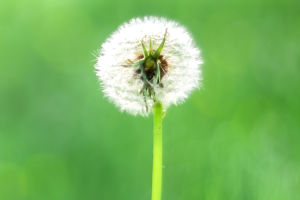Succulents have become a favorite among home decorators and gardening enthusiasts in recent years.
Their unique appearance and low-maintenance care requirements have made them popular plants that can thrive in a variety of environments, often growing into striking and beautiful shapes.
Succulents are adored for their charm, but many intriguing aspects of these plants go beyond their common characteristics. These lesser-known attributes are worth exploring, especially for those interested in the biology and versatility of these fascinating plants.
From an evolutionary standpoint, the physiological structure of succulents is a perfect example of how plants adapt to their environment. Their thick leaves or stems are the result of long-term evolution designed to help them survive in arid conditions.
One of the key features that enable this survival is the vacuole, a specialized structure within their cells that allows them to store large amounts of water and nutrients. This adaptation helps them endure prolonged drought periods. Interestingly, different types of succulents store water in different ways.
For example, cacti primarily store water in their swollen stems, while plants in the Crassulaceae family rely more on their leaves to store moisture. This diversity in their physiological structure not only highlights their survival strategies but also contributes to their unique and often aesthetically pleasing forms.
Ecologically, succulents are far more versatile than their reputation as desert dwellers might suggest. These plants are found in a wide range of environments around the globe, from tropical to cold climates, and from flatlands to mountainous regions.
For example, in the Namib Desert of Africa, a succulent known as "Rosewood" thrives despite the harsh conditions. During prolonged droughts, Rosewood enters a dormant state, and once the rains arrive, it quickly absorbs water, regains vitality, and completes its life cycle, including flowering and fruiting, in a short time.
Similarly, in the Andes Mountains of South America, a succulent called the "Uyuni Magic Stone" flourishes in the barren, alpine environment. Its roots dig deep into rock crevices, allowing it to withstand strong winds and freezing temperatures.
These examples showcase the incredible adaptability and resilience of succulents, making them some of the most robust plants on the planet.
The methods used to plant and display succulents have also evolved significantly over the years. While traditional potted planting remains popular, innovative techniques like vertical gardens and hanging arrangements are gaining traction.
In urban settings, many people incorporate succulents into their interior décor in creative ways. Due to their low soil requirements and ability to thrive in confined spaces, succulents are perfect for vertical plantings that save space while adding a touch of green to any environment.
Vertical gardens or green walls not only enhance the aesthetic appeal of indoor spaces but also improve air quality by reducing pollutants. These innovative methods of growing succulents bring both visual pleasure and environmental benefits.
Succulents also have a surprising range of applications in medicine and beauty. Aloe vera, one of the most well-known succulent plants, is a prime example of how succulents can be used in skincare products.
Its leaves contain a gelatinous substance that is widely recognized for its moisturizing, anti-inflammatory, and skin-repairing properties. Aloe vera gel is commonly used to soothe dry skin, burns, and minor wounds.
Furthermore, scientific studies have shown that some of the components in aloe vera can promote skin cell regeneration, helping to delay the signs of aging. Beyond aloe vera, other succulents have medicinal uses as well.
For instance, the juice of the agave plant, a large succulent, has been used as a natural remedy with hemostatic and antibacterial properties. These examples demonstrate the significant role succulents play in both natural medicine and modern beauty products.
The artistic value of succulents is another aspect that cannot be overlooked. Their unique shapes and vibrant colors make them highly sought after by floral designers and artists alike.
Succulents are often used to create living sculptures, where designers combine various species to craft intricate and eye-catching displays. Due to their durability, succulents maintain their appearance for long periods, making them ideal for interior decorations, wedding arrangements, and other creative projects.
Additionally, advancements in 3D printing technology have allowed the forms of succulents to be replicated in modern sculptures and architectural designs, showcasing a beautiful intersection of nature and technology.
Each succulent plant tells a story of biological evolution and adaptation. Their diversity and ability to thrive in harsh conditions reveal the remarkable capabilities of nature.


